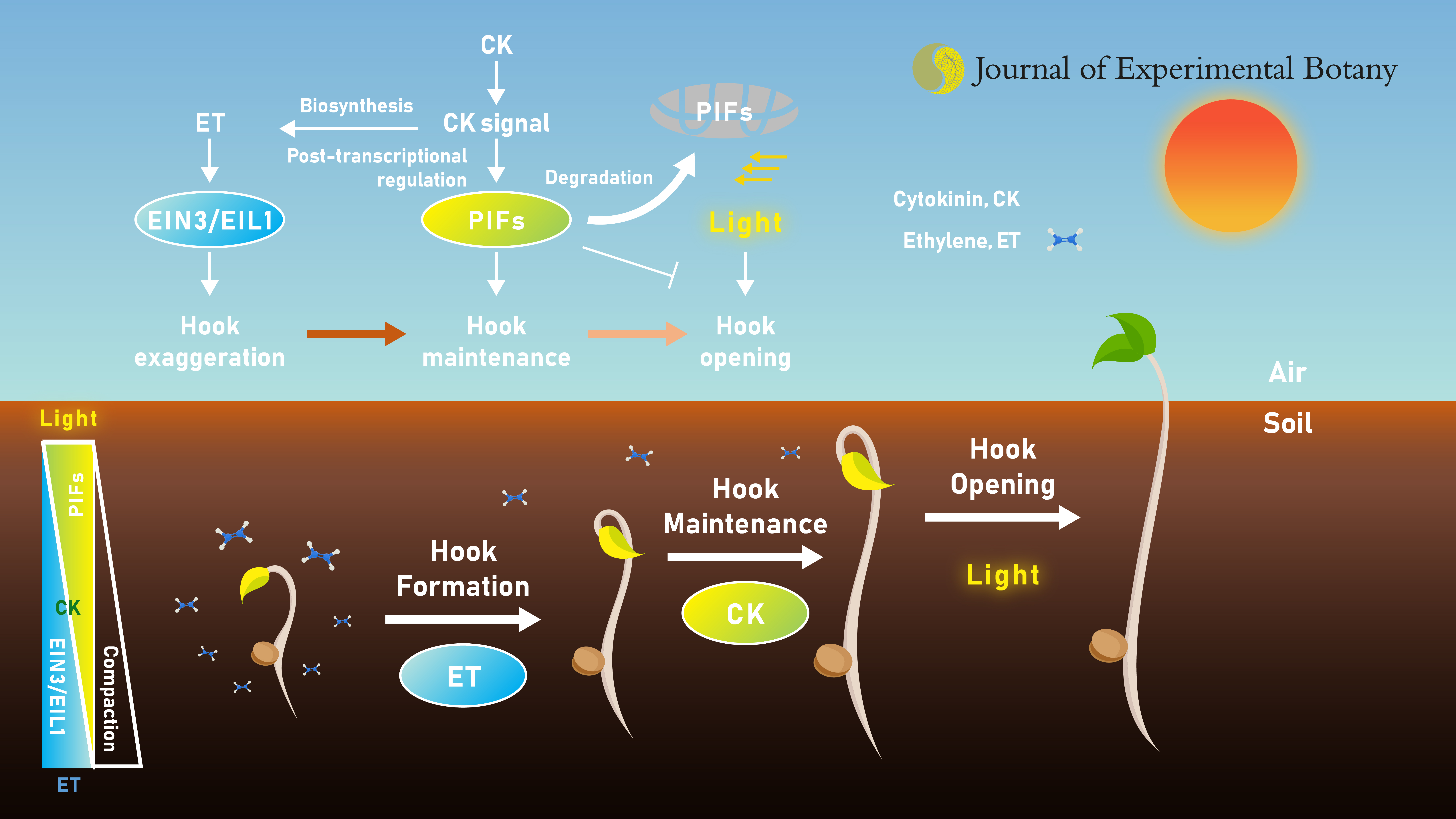Recently, Yalikunjiang Aizezi, an undergraduate student from Professor Hongwei Guo’s research group from the School of Life Sciences at the Southern University of Science and Technology (SUSTech), published a paper about regulating plant apical hook development. The study, entitled “Cytokinin regulates apical hook development via the coordinated actions of EIN3/EIL1 and PIF transcription factors in Arabidopsis,” was published in the Journal of Experimental Botany. The paper reported a novel mechanism of cytokinin-regulated apical hook development in Arabidopsis and clarified the significant role of cytokinin in seedling soil emergence.

The apical hook of dicot plants is an important structure that protects the fragile cotyledon from mechanical injury exerted by the soil. Arabidopsis mutant with defects in apical hook formation failed to emerge from the soil (Zhong et al., 2016). Multiple studies showed that apical hook development is orchestrated by endogenous phytohormones and external stimuli. In this report, Aizezi performed a chemical genetics screening and identified that cytokinin derivatives promoted apical hook development in ethylene insensitive mutant ein3 eil1 (Figure 1).

Figure 1. Cytokinin promotes apical hook development
Genetics and biochemical analyses demonstrated that cytokinin or its derivative promotes apical hook development via two parallel signaling pathways, including a well-known ethylene-dependent signal and an initially identified signal mediated by PHYTOCHROME INTERACTING FACTORs (PIFs), a transcription factor family. Cytokinin can stabilize PIF4 and PIF5 proteins post-transcriptionally. Dynamic observation revealed that cytokinin could promote both exaggerations as well as maintenance of apical hook in a different manner from ethylene. Further experiments showed that cytokinin-induced maintenance of apical hook is dependent on PIFs rather than EIN3 from ethylene signaling. A previous report from Prof. Hongwei Guo’s group showed that PIFs and EIN3 regulate apical hook development in parallel (Zhang et al., Plant Cell, 2018). This discovery deepened their understanding of the functional divergence of PIFs and EIN3.
They proposed a model of coordinated actions of ethylene and cytokinin in regulating dicot seedling during soil emergence. When seeds are germinated in the deeper soil, the relatively stiffer soil would cause the ethylene produced by plants to accumulate, thus promoting the apical hook’s formation. When the hypocotyl of the seedling elongates to reach the upper soil, where it is looser, ethylene diffuses, and its signaling would therefore attenuate. This is when cytokinin takes its place to promote the apical hook maintenance via a PIF-dependent pathway to protect the young cotyledon. When the seedling successfully penetrates through the soil, the light would induce the opening of the apical hook and trigger the initiation of photomorphogenesis (Figure 2).

Figure 2. A model for cytokinin, ethylene, and light regulating apical hook development
The first author of this research paper is undergraduate student Yalikunjiang Aizezi from the School of Life Sciences at SUSTech. The corresponding authors are Prof. Hongwei Guo and Research Assistant Professor Kai Jiang.
This work was supported by the National Natural Science Foundation of China (NSFC), the Guangdong Innovative and Entrepreneurial Research Team Program, the Shenzhen Science and Technology Program, and the Guangdong “Climbing Project.”
Paper link: https://academic.oup.com/jxb/advance-article/doi/10.1093/jxb/erab403/6359794
Proofread ByAdrian Cremin, Yingying XIA
Photo By